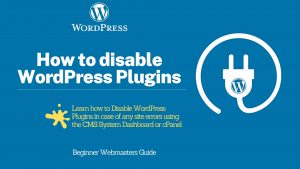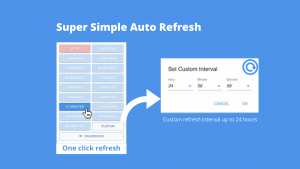Greetings from the futuristic healthcare technology-driven systems through which digitally elevated and Smart Hospitals help enhance efficiency and patient experience. Something extraordinary is occurring in the medical industry: smart hospitals are revolutionizing how things are done. Smart Hospitals build on the Safe Hospital Initiative and focus on improving hospitals’ resilience.
Additionally, they help strengthen structural and operational aspects and provide green technologies. Energy improvements include solar panel installations, electric storage batteries, and low-consumption electrical systems, which, in addition to reducing energy consumption, minimize the health sector’s carbon footprint in the environment and provide the hospital with energy autonomy.
As a result, this allows Smart Hospitals to continue running during emergencies and disasters. Equally important, they offer training to the healthcare system workforce and those from other medical sectors to strengthen the response capacity of their health facilities. Ensuring the availability of essential resources for the hospital disaster response is also another invaluable element.
Generally speaking, piloted in 2012 in Saint Vincent and the Grenadines and St. Kitts and Nevis, the Smart Hospitals Project is one of PAHO’s massive partnership initiatives, together with the United Kingdom’s Department for International Development (DFID), now called FCDO. Be that as it may, let’s dive into the digital wonders that make hospitals smarter and friendlier for everyone involved.
Understand How Smart Hospitals Foster Digital Efficiency And Patient Experience
Safe Smart Hospitals are facilities whose services remain accessible and functioning at maximum capacity and within the same infrastructure immediately following a natural disaster. The term ‘smart hospital‘ encompasses all health facilities, regardless of their level of design complexity. A hospital is ‘safe’ when it enjoys the highest level of possible protection measures to target patients.
At the same time, it’s deemed Smart Hospitals when access routes to the health facility are open and when the water supply, electric power, and telecommunications can continue supplying the facility indefinitely. Thus guaranteeing continuity of operations and the ability to absorb the additional demand for medical care. In other words, this is a facility whose services never end…
No matter the situation, their services and solutions support remain accessible and functioning at maximum capacity and within the same infrastructure immediately following a disaster caused by a hazard of natural origin. At the same time, they strengthen emergency preparedness and disaster relief through team efforts and updating national, local, and hospital plans for disasters.
Smart Hospitals — which utilize data and AI insights to facilitate decision-making at each stage of the patient experience — can provide medical professionals with insights that enable better and faster care. The most effective Smart Hospitals use innovative tools for data management to accelerate and enhance the work healthcare professionals and hospital managers are already doing.
Their Topmost Objectives:
- Develop national policies and regulations on making hospitals safe from disasters.
- Protect the lives of the occupants of a hospital or health facility.
- Track hospital bed occupancy, monitor patients’ vital signs, and analyze radiology scans.
- Protect the economic investment or new facilities functionality and those identified as priorities within the health sector.
- Compile, organize, and monitor the implementation of policies and national and international regulations on safe hospitals.
A health facility and the health services network vulnerability issues can be reduced by carrying out a functional diagnosis. In addition, it also identifies priority components, including vulnerability and risk reduction in national accreditation processes, certification, and licensing in health facilities. The availability of essential medical response resources in disasters is vital.
Know How Smart Hospitals Differ From Traditional Healthcare Systems
It’s worth mentioning that Smart Hospitals frequently generate and collect data, much of which is now digitized. This allows them to apply such technologies as data analytics and AI for improved insights. Data once stored as a paper file with a patient’s medical history, lab results, and immunization information is now stored as electronic health records or EHRs. Digital CT and MRI scanners.
The software also includes the PACS medical imaging storage system, replacing analog radiology tools. Connected sensors in hospital rooms and operating theaters can record multiple continuous data streams for real-time and retrospective analysis. As hospitals transition to these digital tools, they’re poised to shift from a regular hospital to a Smart hospital that collects data.
It also analyzes data to provide valuable, timely insights. Utilizing Natural Language Processing (NLP) models can rapidly pull insights from complex pathology reports to support cancer care. Data science can monitor emergency room wait times to resolve bottlenecks. AI-enabled robotics can assist surgeons in the operating room. A strategic video analytics plan is also invaluable.
One thing is sure: Innovative video analytics tools can detect when a hand sanitizer supply is running low or take notice when a patient needs attention — such as seeing the risk of falls in the hospital or at home. In other words, unlike traditional healthcare systems, Smart Hospitals use innovative technology that digitally benefits medical professionals and potential patients.
How Smart Hospitals Streamline Processes Using Intelligent Technology
Resource Reference: 10 Ways Healthcare Online Booking Is Empowered By Technology
Smart Hospitals have already shown their cost-effectiveness and resilience to disasters. In St. Vincent and the Grenadines, Georgetown Hospital (benefiting from the intervention of Smart Hospitals) was the only one that remained functional after a severe storm. Eventually, the storm affected 39 clinics, as cited by Milton Cato Hospital. Crucial objectives drive Smart Hospitals.
*1. Paperwork Elimination
Have you ever wished seeing a doctor could be just a click of a button and have all your info at their fingertips? Well, welcome to the era of digital records! Intelligent Healthcare and Smart Hospitals have bid farewell to stacks of paperwork, making everything smoother and faster. Healthcare professionals now devote more time to treating patients and less to paperwork. Your medical history may have been kept in a filthy file cabinet back in the day. But now, with digital records, your health story is just a click away. Doctors can pull up your info in a flash, ensuring they have the complete picture before they even say hello. It’s magical, but better.
*2. Tech-Savvy Rehab Clinics
Next on the list, rehabilitation clinics are getting a new innovative technology makeover, too! Picture this: smart gadgets guiding you through exercises, tracking your progress, and turning recovery into a bit of a video game. It’s not just rehab; it’s rehab with a digital twist! Recovery can be challenging, but it becomes more exciting with Smart Hospitals as your digital companion. Imagine your rehab exercises turning into a game where you earn points for each successful step. It’s not just about healing; it’s about making the journey engaging and motivating. And in this digital rehab world, progress tracking becomes a breeze — no more second guessing.
*3. Monitoring Health In Real-Time
Imagine your body sending live updates to doctors — that’s magical real-time monitoring! Wearables and excellent sensors monitor your health 24/7. If something seems off, your healthcare team gets an instant heads-up. It’s like having a personal health superhero! And oh! Can you remember the nightmare of waiting for your next appointment when you’re at your lowest? Thank God that has passed! Your body and healthcare team constantly communicate when you use real-time monitoring. They’ll be alerted when your temperature rises or your heart skips a beat. This safety net keeps you and your healthcare team in sync and efficient.
*4. Providing Personalized Care
In the world of ever-evolving Smart Hospitals, you’re not just a patient but a VIP. Regarding cloud computing technology, digital online systems will tailor everything to suit your needs – from treatment plans to how you want to be kept in the loop. Applications and portals let you take charge of your health journey, putting you in control. Imagine this: you log into your patient portal, and there it is – your personalized treatment plan designed just for you. No generic advice; it’s like having a healthcare plan crafted specifically for your needs and preferences. The digital touch doesn’t just make things efficient; it makes them personal.
*5. Seamless Medics Collaboration
Communication is critical, especially in healthcare. Smart hospitals use nifty digital tools to ensure everyone on your healthcare team is on the same page—no more delays or confusion—just smooth teamwork for your well-being. Think about the last time you went through a battery of tests. In the past, results might have been scattered across departments, causing delays in decision-making. But now, with digital communication tools, specialists can huddle up virtually, discuss your case in real time, and craft a comprehensive plan together. It’s not just efficient; it’s a digital symphony of collaboration, ensuring you get the best care possible.
*6. Unlimited Service Solutions
Smart Hospitals can utilize AI analytics and machine learning to mine data that can be used to help healthcare facilities optimize their limited resources. Eventually, this increases operational efficiency for a better patient-centric approach. Sensors can monitor patients when they’re alone in the room. Using AI-powered algorithms can help inform which patients should be prioritized based on the severity of their cases. Likewise, telehealth solutions can help deliver care to patients outside of hospital visits.
*7. Limitless Medical Support
Some Smart Hospitals utilize unique tools that enable doctors, nurses, medical imaging technicians, and other healthcare experts to focus more on patient care by taking care of routine or laborious tasks. This may include writing notes about each patient interaction, segmenting anatomical structures in an MRI, or converting doctor’s notes into medical codes for insurance billing. AI algorithms also aid in clinical decision-making, providing a second opinion or triage recommendation per individual patient data.
*8. Automating Operational Tasks
Today, most Smart Hospitals embrace robust technology systems that can bring health services closer to the goal of consistent, high-quality patient care — anywhere worldwide, from any doctor. Clinicians vary in skill level, areas of expertise, access to resources, and time available per patient. By deploying AI and robotics to monitor patterns and automate time-consuming tasks, Smart Hospitals can allow clinicians to focus on interacting with their patients for a better experience.
*9. Continuous Technology Integration
Smart Hospitals focus on integrating a system model that alerts healthcare nurses and medical physicians to patients at risk of harm. Based on in-door positioning system data, another system automates clinic workflows to maximize staff productivity and improve patient satisfaction. Next, another system detects preoperative, intraoperative, and postoperative events to coordinate surgical throughput. Overall, these systems make it easy to add functionality regardless of location.
*10. Robust Performance Monitoring
By all means, an AI-backed sensor network can help monitor hospital rooms to prevent patients from falling. It can also detect when hospital supplies are running low or when an operating room needs to be cleaned. These systems extend beyond the hospital walls through integrated teleconsult tools to monitor at-risk patients at home. The last key element of healthcare operations is medical coding, which turns a clinician’s notes into alphanumeric codes representing every diagnosis and procedure.
Know The Hospital Safety Index And Program Design Dashboard Features
According to the Pan American Health Organization (PAHO), the Hospital Safety Index, a tool developed by PAHO and a group of Caribbean and Latin American experts, is widely used by health authorities to gauge the probability that a hospital or health facility will continue to function in emergencies. Over half of the 16,000 hospitals in Latin America and the Caribbean are at risk.
They fall in areas at high risk for disasters. The Hospital Safety Index helps health facilities assess their safety and avoid becoming casualties of catastrophe. On that note, the Hospital Safety Index provides a snapshot of the probability that Smart Hospitals or Healthcare Facilities will continue functioning in emergencies based on structural, nonstructural, and other functional factors.
Some of these factors include the environment and the health services network to which it belongs. By determining a hospital’s Safety Index or score, countries, and decision-makers will have an overall idea of its ability to respond to major emergencies and disasters. However, it’s crucial to note that the Hospital Safety Index does not replace costly and detailed vulnerability studies.
On the contrary, because it is relatively inexpensive and easy to apply, it is an essential first step toward prioritizing a country’s investments in hospital safety. Determining the Hospital Safety Index is a new way of managing risk in the health sector. It allows a health facility’s level of protection to be monitored over time. Security must no longer be a ‘yes-or-no’ or an ‘all-or-nothing situation.
Some Recommendable Smart Hospitals Program Integration Techniques
- Lobby with decision makers to incorporate a safe hospitals program in ministries of health and other institutions that contribute to this goal, as well as in subregional integration organizations (SICA, the Central American Integration System; CAN, the Andean Community; and CARICOM, the Caribbean Community).
- Identify other sectors involved in safeguarding health facilities from disasters (drinking water, electric power, finance, disaster response committees, communications media, etc.) and involve them in joint technical and outreach activities.
- Develop scientific and academic programs and activities on safe hospitals in universities, research centers, and professional associations related to the construction and operation of hospitals.
- Incorporate criteria for protecting health facilities into health investment projects, so they serve as technical guidelines for incorporating risk mitigation in new health facilities. Include reference to these criteria in soliciting bids on design, construction, and operation of health facilities.
- Establish and implement independent mechanisms for control and supervision of projects, with the intervention of skilled professionals who coordinate with the team executing the project.
- Mobilize the national and regional technical capacity in safe hospitals, including WHO Collaborating Centers and the Disaster Mitigation Advisory Group (DiMAG).
Safe Hospitals can serve as a model once the criteria, goals, and indicators are defined. Smart Hospitals ‘model’ designation will incentivize the rise of secure hospital programs working to achieve its achievable goals. Experiences and lessons from this process must be documented and shared globally. In Texas, MD Anderson is harnessing hospital records to analyze population data.
The Smart Hospitals Toolkit To Help Empower Efficient Digital Solutions
On the one hand, the Smart Hospitals Toolkit is designed for hospital administrators, health disaster coordinators, health facility designers, engineers, and maintenance staff. Thus, it helps them assess disaster safety levels and energy consumption and provides recommendations and action plans for implementing interventions to improve resilience, conserve resources, or cut energy costs.
On the other hand, the Toolkit also helps lower the level of dependency, increasing energy efficiency in operations and reducing carbon emissions. It comprises previously developed instruments such as the Hospital Safety Index, the Green Checklist, and other accompanying tools. Still, it aims to guide healthcare facilities in linking their structural and operational safety. Watch this guide:
Specifically, this happens through the help of green business technology interventions at a reasonable cost-to-benefit ratio toward becoming smart-driven service solution providers. Moving on, as we mentioned, calamities, natural hazards, and climatic extremes, like hurricanes, earthquakes, floods, and storm surges, can cause significant disruption of health services and economic losses.
Equally important, service solutions downtime, during and after an extreme event, limits the ability of health facilities to provide emergency care to victims and ongoing healthcare for their communities. Notwithstanding, healthcare facilities can also be large energy consumers with a significant environmental footprint. Below are a few essential innovative strategies you can integrate.
Resilience:
- Solid roofing and foundation
- Enhanced cybersecurity and signage
- Safe storage of equipment and fuel
- Protected and efficient doors and windows
- Power and water backup systems
- Disaster and risk management
- Comprehensive maintenance planning
- Good drainage with disabled access paths
Sustainability:
- Downtime reduction
- Resilient structure plans
- Reduced operating costs
- Integrate improved safety
- Satisfied patients and staff
- Be environmental-friendly
- Improved emergency care
- Quality community services
Compliance:
- Efficient water management
- Proper food management
- Minimal waste management
- Surround pollution reduction
- Rainwater tapping (harvesting)
- Alternative (renewable) energy
- Efficient lighting and cooling
- Improved indoor air quality
As mentioned, in St. Vincent and the Grenadines, Georgetown Hospital (benefiting from the intervention of Smart Hospitals) was the only one that remained functional after a severe storm affected 39 clinics. In addition, this hospital became a water supply center for the community after the storm, using rainwater reserves. Thus, we are encouraged to tackle global challenges as a unified workforce.
Hello To The Future – Artificial Intelligence Smart Hospitals And Friends!
A bustling hospital has innumerable moving parts — patients, staff, medicine, and equipment — presenting an opportunity for AI automation to optimize operations around the facility center. While a doctor or nurse can’t be at a patient’s side at every moment of their hospital stay, a combination of intelligent video analytics and other smart sensors can closely help monitor patients.
These tools can also alert healthcare providers when the person is distressed and needs attention. In an ICU, patients are connected to monitoring devices that continuously collect vital signs. Many of these constantly beep with various alerts, leading practitioners to sometimes overlook the alarm of a single sensor. Some aggregate the streaming data from multiple devices into a single feed.
Resource Reference: How A San Francisco Startup Uses AI For Automating Medical Coding
At all costs, innovative systems use AI algorithms to analyze the data in real-time, helping to detect more quickly if a patient’s condition suddenly turns for the better or worse. On that note, the future is looking even brighter through Artificial Intelligence (AI) and Machine Learning (ML) technologies automation. These tech-wizzy tools help predict health issues and create personalized plans.
Naturally, enormous power also entails great responsibility, so we must ensure everyone has a piece of the digital pie! Imagine being guided through your health journey by an AI-powered virtual health assistant. It acknowledges your unique needs, anticipates potential issues, and offers suggestions to keep you performing at your best. Despite their extraordinary potential, skills are vital.
Summary Notes:
In a nutshell, enhancing intelligence in the healthcare business industry is just one goal of Smart Hospitals. The other goal is to increase accessibility for all societies. They must ensure everyone can use their innovative technologies. Some startup entrepreneurs are developing AI models to automate the tedious medical coding process and reduce costs while increasing speed and precision.
Smart Hospitals are like the superheroes of futuristic healthcare systems, using digital technology-driven powers to improve everything. It’s a win-win situation, from skipping paperwork to giving you a say in your health. As we ride this tech wave, let’s ensure no one gets left behind, keeping healthcare intelligent, simple, and caring for everyone. Cheers to a healthier, happier future!
Resource Reference: Create A Comfortable Living Environment Through Recovery Care Services
Healthcare systems can be gradually improved. Furthermore, the Hospital Safety Index was developed through a lengthy process of dialogue, testing, and revision over two years, initially by the Pan American Health Organization’s Disaster Mitigation Advisory Group (DiMAG) and later with input from other specialists in Latin America and the Caribbean based on various guides.
Remember, although the Smart Hospitals concept has not been implemented in most nations and leading countries, medical enthusiasts and healthcare practitioners are already aware of the Safe Hospitals Initiative and its futuristic technology integration benefits. At the same time, they are also well aware of the role of the Hospital Safety Index, which is widely disseminated worldwide.







